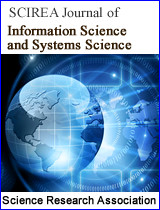Simulation Models of Modified Multiple Vacation Policy for Multi-Server Queuing Systems
DOI: 10.54647/isss12197 79 Downloads 15040 Views
Author(s)
Abstract
We consider a multi-server vacation queueing system that operates in the modified multiple vacation policy related to the number of busy servers. The condition for the transition to vacation mode at the time of the release of the server is the lack of customers in the queue and the implementation of one of the restrictions on the number of servers currently in use by customers (CU-condition): CU
Keywords
queueing system, vacations, modified multiple vacation policy, simulation model, GPSS World
Cite this paper
Zhernovyi Yuriy,
Simulation Models of Modified Multiple Vacation Policy for Multi-Server Queuing Systems
, SCIREA Journal of Information Science and Systems Science.
Volume 6, Issue 1, February 2022 | PP. 62-88.
10.54647/isss12197
References
| [ 1 ] | Levy, Y. and Yechiali, U., “Utilization of Idle Time in an M/G/1 Queueing System,” Management Science, 22 (2). 202-211. Oct.1975. |
| [ 2 ] | Doshi, B.T., “Queueing Systems with Vacations − a Survey,” Queueing Systems, 1, 29-66. June.1986. |
| [ 3 ] | Ibe, O., “M/G/1 Vacation Queueing Systems with Server Timeout,” American Journal of Operations Research, 5 (2). 77-88. Mar.2015. |
| [ 4 ] | Takagi, H., Queueing Analysis: A Foundation of Performance Evaluation, Vacation and Priority Systems, Part I, Volume I; North-Holland, Amsterdam, 1991. |
| [ 5 ] | Yadin, M. and Naor, P., “Queueing system with a removable service station,” Journ. of the Operational Research Society, 14 (4). 393-405. 1963. |
| [ 6 ] | Heyman, D.P., “The T-policy for the M/G/1 queue,” Manag. Sci., 23 (7). 775–778. Mar.1977. |
| [ 7 ] | Levy, Y. and Yechiali, U., “Utilization of idle time in an M/G/1 queueing system,” Manag. Sci., 22 (2). 202–211. Oct.1975. |
| [ 8 ] | Birta, L.G. and Arbez, G., Modelling and Simulation: Exploring Dynamic System Behaviour, 3rd edition, Springer Nature, Switzerland, 2019, 491-520. |
| [ 9 ] | Zhernovyi, Yu., Creating models of queueing systems using GPSS World: Programs, detailed explanations and analysis of results, LAP Lambert Academic Publishing, Saarbrücken, 2015, 220 p. |
| [ 10 ] | Levy, Y. and Yechiali, U., “An M/M/s queue with servers vacations,” Information Systems and Operational Research, 14 (2). 153-163. 1976. |

